Seafood and fish guide
Our in-store fishmongers make sure that what you're getting is only the best and freshest kaimoana | Fresh Food People™

At New World we work directly with local fishermen and women around the country to help us harvest our fishing quota in a sustainable way. These experts ensure our fish are well cared for and delivered as fresh as possible to our in-store fishmongers. So when you’re selecting a fish fillet for dinner, you know it’s been caught and prepared by our experts.
Sustainable seafood
New World’s fish is very fresh, because we use local fishermen, who fish in local waters and supply their catch to your local store throughout the week.
For example, Auckland fisherman Brendan Taylor lives in Manurewa and fishes around Auckland and Thames/Coromandel. The flounder, mullet, kahawai and spotted dog fish he catches is sold in Auckland New World stores and can be on the shelves within 24 hours.
Brendan uses small trailer boats and only goes out fishing for a few hours at a time before bringing it back for processing - which means his fish is always very fresh.
“You’re getting the best quality freshest fish you can possibly get,” Brendan says. “You just can’t get that from a boat that’s going to go out for two or three days before it comes back. We’re back every day and we generally go to New World to unload twice a week, three times a week, so we’re giving the customer the best quality fish that they can possibly purchase. It’s locally caught fish by local fishermen to local people. It’s caught locally, it’s going to local stores.”
Buy fresh fish fillets and steaks
1 / 0
How to buy seafood and fish
New Zealand is blessed with a wealth of seafood right on our doorstep. From fresh oysters to delectable buttery scallops, our waters are teeming with fresh fish and seafood, ready to be cooked into tasty meals.
But the first step to creating these delicious dishes is starting with the best ingredients.
This guide will talk you through everything you need to know when buying fish and seafood.
Fresh vs. Frozen vs. Live
The language around fish and seafood can be confusing to wrap your head around. Depending on what kind of seafood you’re talking about, words can change meaning too.
If you’re looking for clams, mussels, or oysters, they’re usually sold alive. Often, they’ll be on ice in large display cabinets, ready for you to take your pick of the bunch.
Fish, along with prawns and several other types of seafood, can be bought fresh or frozen. Frozen usually means that it was deep-chilled straight after it was caught to keep it as close to fresh as possible.
Don’t be afraid to buy frozen – whether fresh or frozen, you can still purchase extremely high quality and excellent value seafood.
Fresh fish
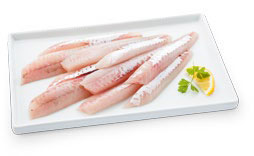
Since New Zealand is surrounded by water, it’s no surprise we have a massive selection of quality fresh fish available in our supermarkets.
There are so many benefits to eating fish. These delicious swimmers are packed with protein and nutrients. In fact, it’s suggested that eating fish can reduce risks associated with heart disease, lower blood pressure, and reduce inflammation.
Wondering how to buy fish? Work through these steps in our fish buying guide:
1. Trust your nose – when buying seafood, don’t be afraid to take a whiff. Fresh fish should smell like sea salt but shouldn’t smell fishy or pungent. We've got you covered! New World's in-store fishmongers make sure that what you're getting is only the best and freshest kaimoana.
2. Choose what kind of dish you’re going to make – there are usually a bunch of options in stock at your local fish counter. Perhaps you’re thinking of creating a crispy skin salmon, or maybe you’re keen to try your hand at a tasty white fish curry. Different species suit different cooking methods and styles, so going in with a loose plan of what you want to cook is always helpful.
3. Ask your fishmonger for help – At New World, we have expert fishmongers who know the products they sell. If you’re not sure what’s right for you, you can always ask them for tips. They’ll know the catch of the day and weekly specials and be able to point you towards oily fish, flaky flounder fillets or the healthiest fish to buy! You can even ask them if they know which days they’ll be receiving delivery of your favourite fish!
You can also read our guide on the best types of fish to eat for helpful tips.
4. Decide if you want fish fillets or whole fish –At New World, our local fishermen help us sustainably gather our fishing quota, delivering our fish as fresh as possible to our store fishmongers. Because it’s coming straight from the fishing boat to your table, you often have a choice between whole fish and fillets. Read through our tips for buying entire fresh fish to ensure you get the best of the selection.
Frozen fish
There are plenty of good reasons to buy frozen fish.
Price – if you’re on a tight budget, it’s no secret that frozen can be a cost-effective option.
Freshness – if it’s been flash-frozen on the boat, just minutes after it’s been caught, sometimes frozen can be even “fresher” than the actual fresh seafood. Since it’s frozen at its peak freshness, all of its flavour, texture and nutrition is locked in.
Convenience– frozen fish lasts well, thaws easily and can be a great convenient evening meal when you don’t have anything planned. Just grab it out of the freezer for a handy dinner!
When looking for frozen fish, keep an eye out for packets stored in a vacuum seal or have a thick glaze of ice on them – these tend to be the best storage methods.
If you’re buying a whole fresh fish, look for clear and not cloudy eyes. If it’s fillet, look for flesh uniform in colour and not faded, as this indicates age.
Make sure to avoid any fish that looks like it has freezer burn, too, as this will affect the overall quality of your fish.
Fresh seafood

1. Perishability – there’s nothing more frustrating than taking something out of the fridge, only to realise it’s already gone bad. Due to seafood’s high free amino acid content and surface humidity, it’s even more perishable than red meat or chicken. When you go to buy seafood, we always suggest eating it within a few days. But some shellfish are more forgiving than others; while mussels and live crustaceans like crabs should be consumed as soon as possible, oysters can last as long as a week. Once again, if in doubt, check with your fishmonger. They’re used to customers asking questions and happy to help.
2. Trust your nose – no, this isn’t a typo. We’ve repeated it because it applies just as much to seafood as it does to fish. Any seafood you purchase should smell very mild, like salty seawater. If it smells fishy, the seafood isn’t fresh. We've got you covered! New World's in-store fishmongers make sure that what you're getting is only the best and freshest kaimoana.
3. Live seafood should have bite! – the feistier a live shellfish is, the fresher they are. If they are slower and sluggish, it’s indicative that they’ve been out of the water for too long.
Frozen seafood
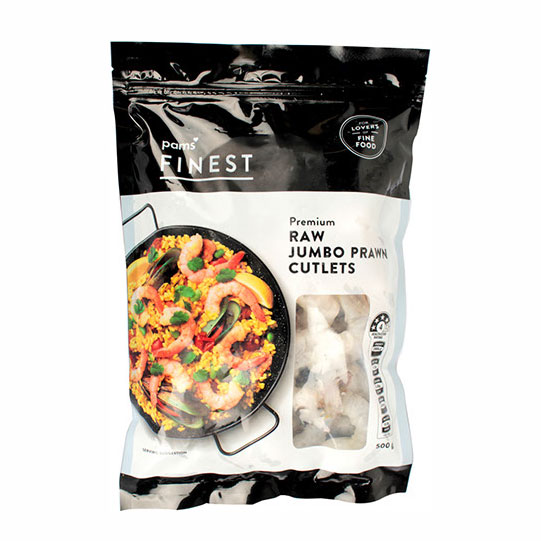
Frozen seafood is another cost-effective and convenient option. Whether you’re looking for prawns, scallops or a lobster tail, these can be purchased frozen at a fraction of the price compared to fresh. Just like our oceans are teeming with seafood, the freezer section at your local supermarket is also filled with a range of high quality seafood stock.
- To get the best flavour and texture out of your seafood, thaw it in the fridge rather than just leaving it on the kitchen counter. Although this takes a bit of forethought, it’s worth the extra time investment.
- For frozen shellfish, thaw it in the fridge over a few days inside large ziplock bags. It can be a bit smelly, so pop in a small bowl of baking soda to absorb the odour.
- If that’s all a bit too hard, you can also just run cold water over it to thaw it out just before cooking for an easy meal any night of the week.Remember – freezing seafood doesn’t mean it needs to be any less tasty or nutritious.
Shellfish
Now that we’ve looked at some general rules for purchasing seafood let’s look at some specific types of shellfish.
Shrimp
As one of the most popular foods at a Kiwi barbeque, shrimp are a New Zealand favourite, eaten and enjoyed in a wide range of dishes. Whether it’s grilled, stir-fried, or tossed with pasta, the humble shrimp is sure to please.
If you’re looking to purchase shrimp, you can look for fresh, frozen or previously frozen.
Here are a few tips for selecting the perfect shrimp:
Fresh shrimp – buy shrimp with the head on if you can because head-on shrimp are less likely to become dry. Shrimp is highly perishable, so make sure it’s stored safely in your refrigerator until it’s ready to be eaten.
Frozen shrimp – an inexpensive and convenient option, great for a quick dinner. Ideally, thaw it in the fridge in advance. If you need to thaw quickly, put your shrimp under cold water. Never use warm water as it will start the cooking process.
Mussels
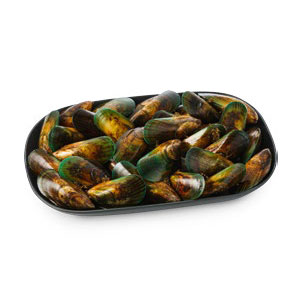
Mussels might look a little daunting, but they actually are one of the simplest types of seafood to prepare. One of the most elegant and classic dishes, steamed mussels with garlic and white wine, is also one of the easiest dinners to create. When you visit the seafood counter to buy mussels, the ones you’re buying are alive. You should make sure to look for specific markers that show they’re alive because once they’ve died, mussels spoil quickly. You can also buy canned and frozen mussels – follow the same rules for all other frozen seafood.
Fresh mussels – should have wet, shiny shells, and their environment should be nice and cool. Ideally, they should be kept on ice. They sometimes come in a mesh bag with a tag indicating their harvest date and use by date.
Very important: the shells should be tightly closed! If any mussels have open shells, gently tap them on the counter, then wait a minute to see if they close. If they don’t close, discard them, along with any that have cracked or chipped shells.
Make sure you take your mussels home in an open-topped bag that can breathe. Stuffing them into a plastic bag with no air can smother them and cause them to spoil.
Lobster
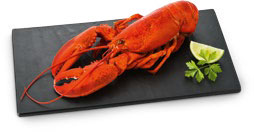
Nothing says fine dining like some lip-smacking lobster! And when we say live seafood should have bite, it’s never truer than with lobster.
- When you pick up a live lobster, its tail should flap aggressively, and it should move its legs and claws vigorously. If a lobster seems lethargic, it’s probably dying and needs to be cooked asap.
- Ideally, live lobster should be cooked the day you get it.
- A dead whole lobster should not be purchased or cooked. They decompose quickly and the meat will be rancid.
Oysters
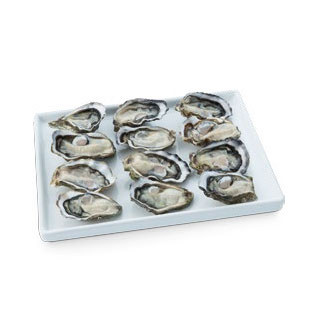
New Zealand is famous for its superb oysters – and we’re lucky enough to have access to raw, frozen and canned. Such is our love affair with oysters that during the lockdown, delivery services were overwhelmed with Kiwis demanding oysters shipped straight to their door. Here are a few things to look out for when purchasing oysters at your local store:
- Live oysters will be tightly clamped shut or quickly clamp shut if you tap them. They should feel heavy and full of water.
- If an oyster is dead, it will have a loose or broken shell. These should be discarded.
- Canned oysters (both plain and smoked) have been pre-removed from their shells. They won’t be as flavourful as live oysters but are still tasty in meals once baked, fried, or stewed.
Clams
We love a good clam chowder! Just like mussels and oysters, clams should be purchased alive with hard shells tightly closed. If you are unsure, gently poke the neck and it should retreat slightly.
Smoked seafood
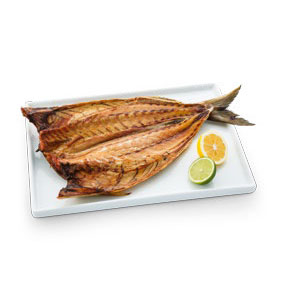
The last variety of marine goodness you’ll find at your local seafood counter is smoked seafood. From smoked salmon to smoked trout, this preservation technique results in distinctively flavourful seafood. The other advantage of smoking is that it extends the shelf life of the product. Whether you’re looking for the perfect dinner party dish or just a snack to go with some crackers, speak to our fishmongers and get them to point you in the right direction.
Looking for articles about fish and seafood?
The first step to creating delicious seafood dishes is starting with the best ingredients. Check out our guides below to cook fish like an expert!
- Types of fish to eat.
- How to store, freeze and defrost fish.
- Tips and methods to cook a delicious seafood meal.
- How to cook salmon.
- How to cook snapper.




















